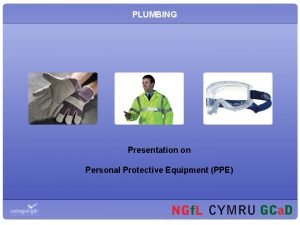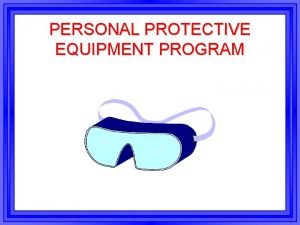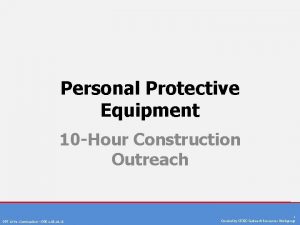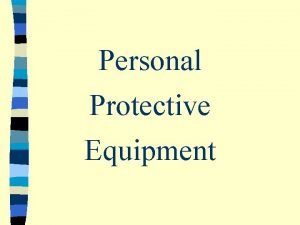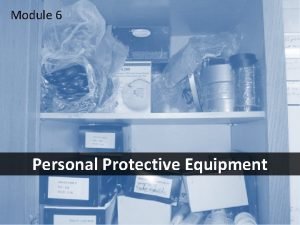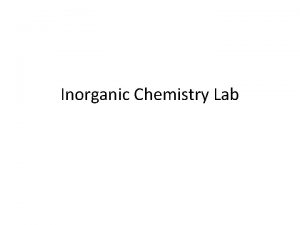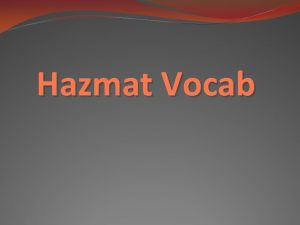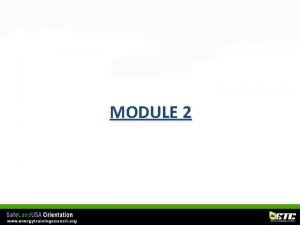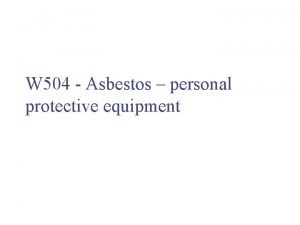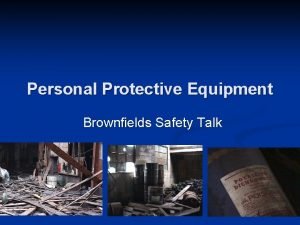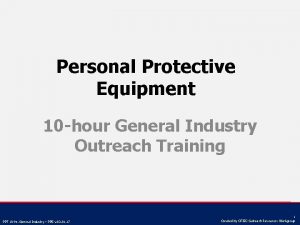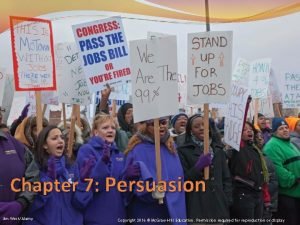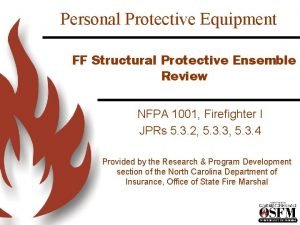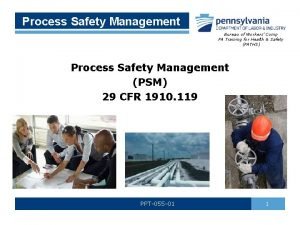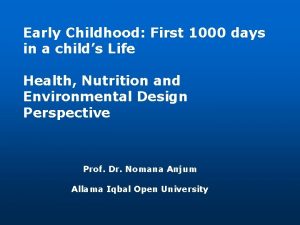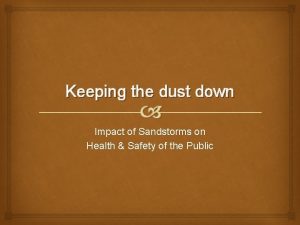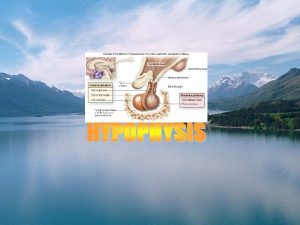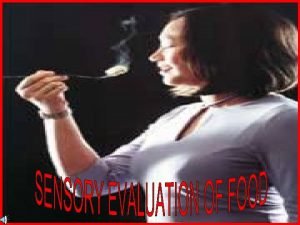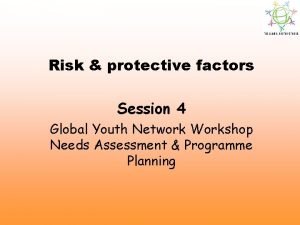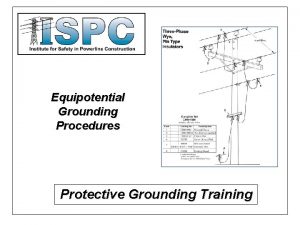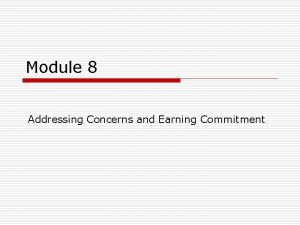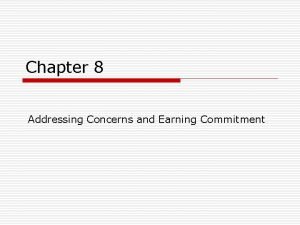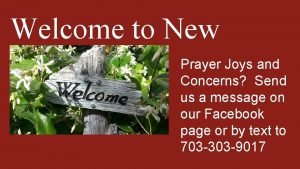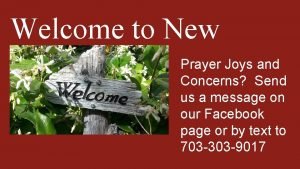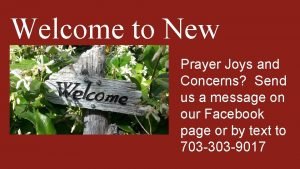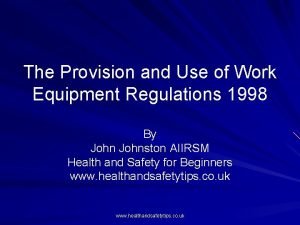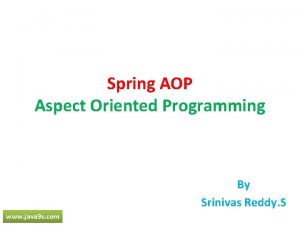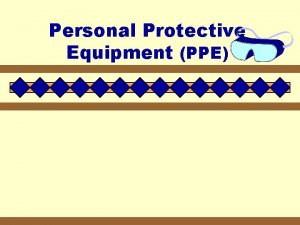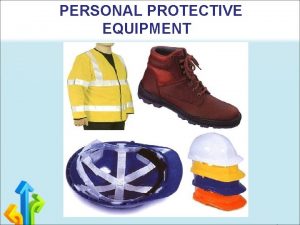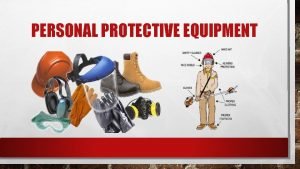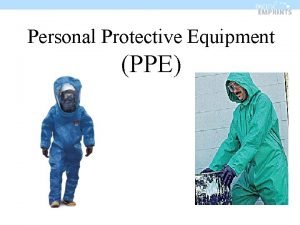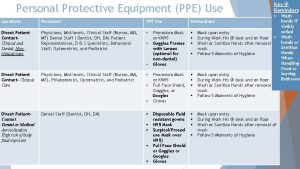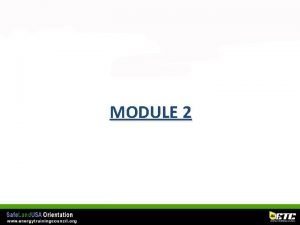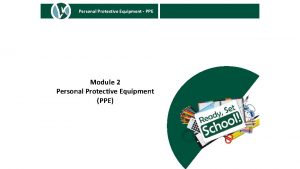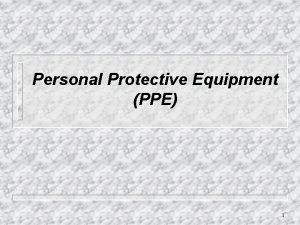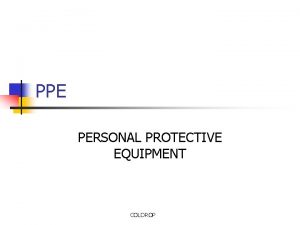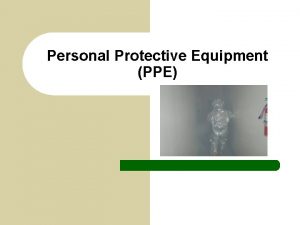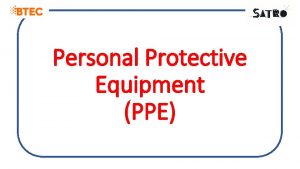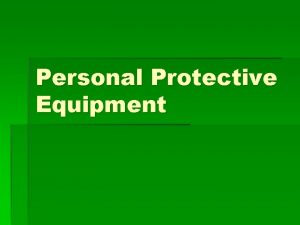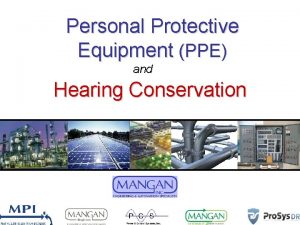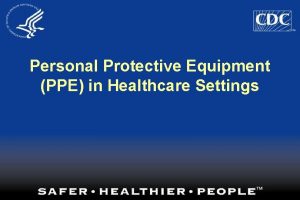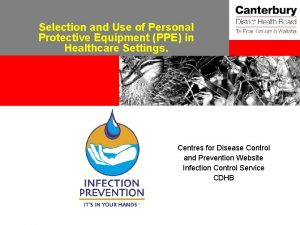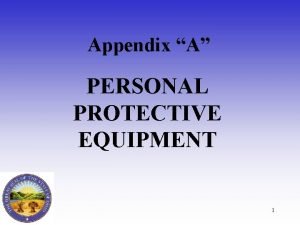Health Concerns and Personal Protective Equipment PPE Use

































- Slides: 33

Health Concerns and Personal Protective Equipment (PPE) Use in Roadway Construction Brent Doney, MS, MPH, CIH 304 -285 -6357 bdoney@cdc. gov National Institute for Occupational Safety and Health Intertraffic North America 2007 October 11, 2007

Outline 1. Focus Groups 2. Bureau of Labor Statistics/National Institute for Occupational Safety and Health Survey of Respirator Use and Practices 3. Onsite Observation of PPE Use and Practices 4. Request for Participants

Highway, Street, and Bridge Construction 2006 Bureau of Labor Statistics data: Ø Number of workers: 360, 000 Ø Location of work: all states


Respiratory Hazards Respirators help protect against inhaled dusts and fumes which pose hazards to U. S. workers Example: crystalline silica Ø 12% of silicosis deaths in construction (select states and years; 1985– 1999) Ø~48, 000 workers in construction were exposed over the NIOSH Recommended Exposure Limit (1993) Sources: 1) NIOSH, National Occupational Respiratory Mortality System (NORMS) 2) Linch et al. JOEM 1998

NIOSH Work on Respiratory Protection in Roadway Construction Focus Groups: ØSmall group discussions ØFree response to directed questions ØLed by a moderator ØFocused on specific topics

Focus Group Objectives To identify: ØAirborne hazards ØControl measures for airborne hazards ØBarriers to respirator use

Focus Groups: 3 Sectors of Construction ØRoad/Transportation — American Road and Transportation Builders Association (ARTBA) ØPainting — Society for Protective Coatings ØDemolition — National Demolition Association

ARTBA Focus Group Results: Types of Work ØAbrasive blasting ØAsphalt plants ØBridge rehabilitation ØCulverts ØMilling ØPaving ØQuarries ØRoad bed preparation


ARTBA Focus Group Results: Airborne Hazards ØAsphalt fumes ØAsphalt additives including fly ash ØConcrete dust and silica ØDiesel and gasoline (vapors and engine emissions) ØHydrogen sulfide ØLead (paint on bridges) ØPaint vapors ØWelding fumes

ARTBA Focus Group Results: Exposure Control Methods ØAbrasive blasting substitutes ØClosed cabs ØLocal ventilation with drills and on paving machines ØFans or natural air movement ØWater spray ØRespiratory protection Ø Only a secondary preventive measure (hazard control comes first)

ARTBA Focus Group Results: Reported Barriers to Respirator Use

Respirator Use & Design Factors ØComfort Ø High ambient temperatures — sweating, heat stress with other PPE (e. g. , face shields, goggles, reflective vests) Ø Lack of comfort

Respirator Use & Design Factors ØVision Ø Fogging of facepiece and safety glasses Ø Difficulty wearing safety glasses with respirators Ø Visual obstruction from respirator (hoods) ØCommunication Ø Low quality respirator speaking diaphragms (break seal to talk)

Industry/Worksite Factors ØHigh worker turnover Ø Train workers Ø Fit test Ø Medically evaluate ØShort duration of projects makes it difficult to: Ø Air monitor ØProper storage and cleaning facilities sometimes not available (makes it difficult to maintain respirators)

Management Factors Ø Respirator programs are costly — training and medical evaluation Ø Worker turnover makes companies reluctant to train workers Ø Difficult to enforce proper respirator use Ø Perception of lack of management and supervisor commitment in some companies

Worker Factors ØNon-English speakers ØLack of knowledge of respirator importance ØLack of worker commitment ØLow educational level of some workers ØFacial hair ØSmokers


Bureau of Labor Statistics/NIOSH Survey of Respirator Use and Practices ØPurpose: Collect information on respirator use and practices to guide NIOSH respirator certification and research ØTime: 2001– 2002 ØSurveyed: ~40, 000 establishments in the 50 states and District of Columbia ØCovered all industry (except public sector, selfemployed, and agriculture establishments with ≤ 10 workers) ØResponse rate: 76% Source: Respirator Usage in Private Sector Firms, 2001. BLS/NIOSH http: //www. cdc. gov/niosh/docs/respsurv/pdfs/respsurv 2001. pdf

Indicators of Inadequate Respirator Programs 1. Lack of a trained respirator program administrator 2. Lack of written procedures for maintaining respirators 3. No provision to fit test wearers of tight-fitting respirators 4. Failure to assess employees’ medical fitness to wear respirators

Indicators of Inadequate Respirator Programs 5. Lack of a written respirator program to determine how respirators are used 6. Lack of training regarding the need, use, limitations, and capabilities of respirators 7. Lack of written procedures to periodically evaluate the effectiveness of respirators used 8. Failure to assure that airline respirator couplings are incompatible with other gas systems

Indicators of Inadequate Respirator Programs 9. Failure to use the proper procedures to adjust the airflow for airline respirators 10. Lack of written change-out schedule for air- purifying gas/vapor filters 11. Use dust masks to protect against gases or vapors

Percent of Respirator Using Establishments Indicators of Inadequate Respirator Programs Number of Indicators

Observation of Respirator Use at ARTBA Companies ØCompanies focus more on safety hazards than on health hazards ØCompanies are using water and substitution to reduce health hazards ØCompanies have safety meetings, some daily

Observation of Respirator Use at ARTBA Companies Problem areas: ØInsufficient air monitoring to determine need for respiratory protection ØEmployee turnover ØNon-English speakers ØBeards

How YOU can help!

NIOSH Project Needs 30 “small” Roadway Construction Companies ØNo more than 150 employees in each company ØTwo or more workers use respirators at least five days/year

What is Expected of the 30 Companies? ØWilling to have NIOSH industrial hygienist (IH) visit worksites twice in a two month period (each visit generally about a day or less) ØNIOSH IH will speak with foremen and workers, in addition to management ØNIOSH IH will offer advice regarding improvements in respiratory protection ØManagement need only consider the advice

Benefits for Participating Companies ØNIOSH IH will suggest interventions and provide materials to remedy shortfalls in PPE programs ØParticipation demonstrates to employees that management is interested in their protection

General Benefits of NIOSH Project ØFeedback on the usefulness of suggested interventions ØInterventions thought to be useful would be considered for nationwide distribution to all roadway construction companies

How can a Company Volunteer? ØI will be available today after this session and tomorrow to discuss your participation ØAfter tomorrow, I can be contacted at: Ø BDoney@cdc. gov Ø 304 -285 -6357 (office) Ø 304 -657 -4159 (cell) ØJerry Teeler (ARTBA) is also available to speak to you about our needs today and later

Quality Partnerships Enhance Worker Safety & Health Visit NPPTL at: http//www. cdc. gov/niosh/npptl The findings and conclusions in this presentation have not been formally disseminated by the National Institute for Occupational Safety and Health and should not be construed to represent any agency determination or policy. Thank you
 Plumbing presentation
Plumbing presentation Personal protective equipment program
Personal protective equipment program Who is responsible for providing specialized work footwear
Who is responsible for providing specialized work footwear Electrode stubs should be placed
Electrode stubs should be placed Ppe objectives
Ppe objectives Personal protective equipment for farmers
Personal protective equipment for farmers A worker mixing chemicals must not wear
A worker mixing chemicals must not wear Chemistry lab ppe
Chemistry lab ppe Personal protective equipment vocabulary
Personal protective equipment vocabulary Personal protective equipment summary
Personal protective equipment summary Personal protective equipment pictograms
Personal protective equipment pictograms Ppe matrix for chemical handling
Ppe matrix for chemical handling Asbestos personal protective equipment
Asbestos personal protective equipment Plumbing ppe
Plumbing ppe Personal protective equipment safety talk
Personal protective equipment safety talk Importance of using personal protective equipment
Importance of using personal protective equipment Ppe equipment and their uses
Ppe equipment and their uses When a choice concerns matters of personal value or taste
When a choice concerns matters of personal value or taste Special protective equipment used in firefighting except
Special protective equipment used in firefighting except Piping and instrumentation diagrams
Piping and instrumentation diagrams Health concerns
Health concerns Health concerns
Health concerns Posterior pituitary blood supply
Posterior pituitary blood supply Comfort food psychology
Comfort food psychology Personal protective factor
Personal protective factor Equipotential grounding
Equipotential grounding Addressing concerns and earning commitment
Addressing concerns and earning commitment Earning commitment
Earning commitment Joys and concerns
Joys and concerns Joys and concerns prayer
Joys and concerns prayer Joys and concerns images
Joys and concerns images Poem about momentum and impulse
Poem about momentum and impulse Puwer reg 4
Puwer reg 4 Java9s
Java9s
